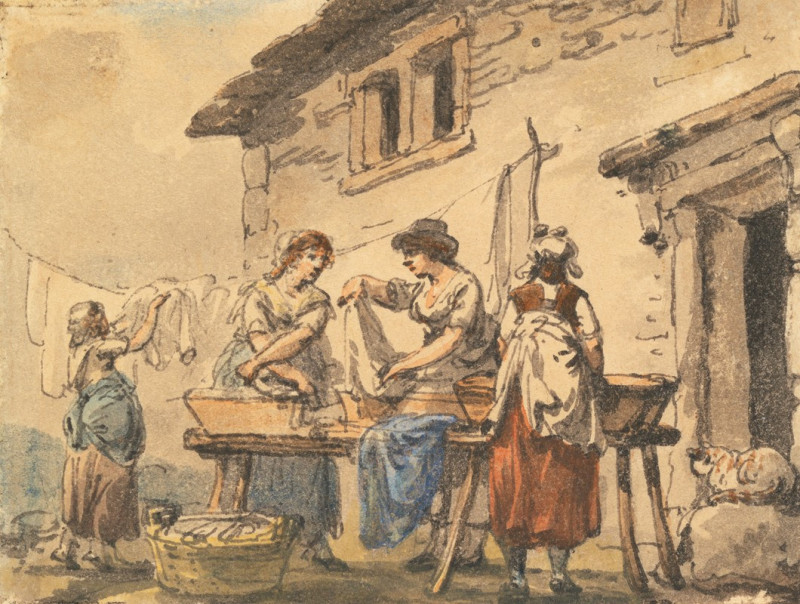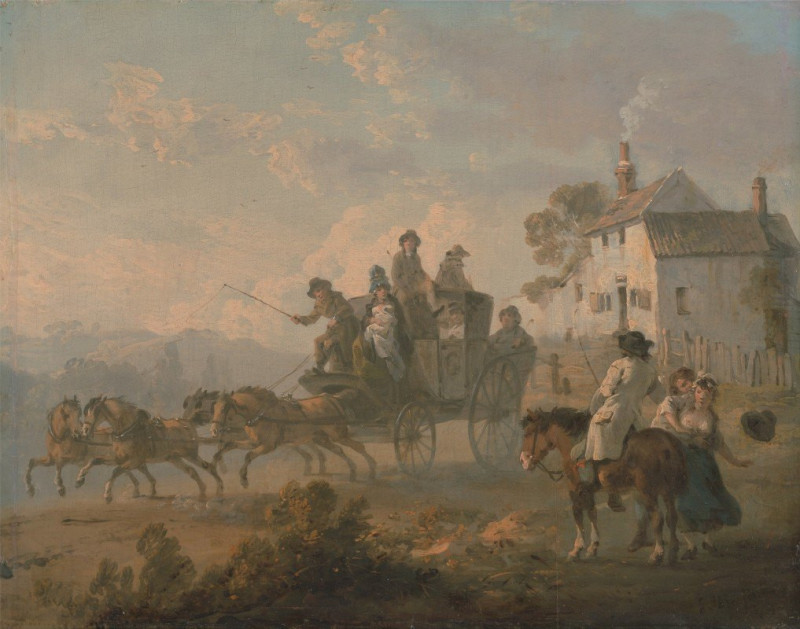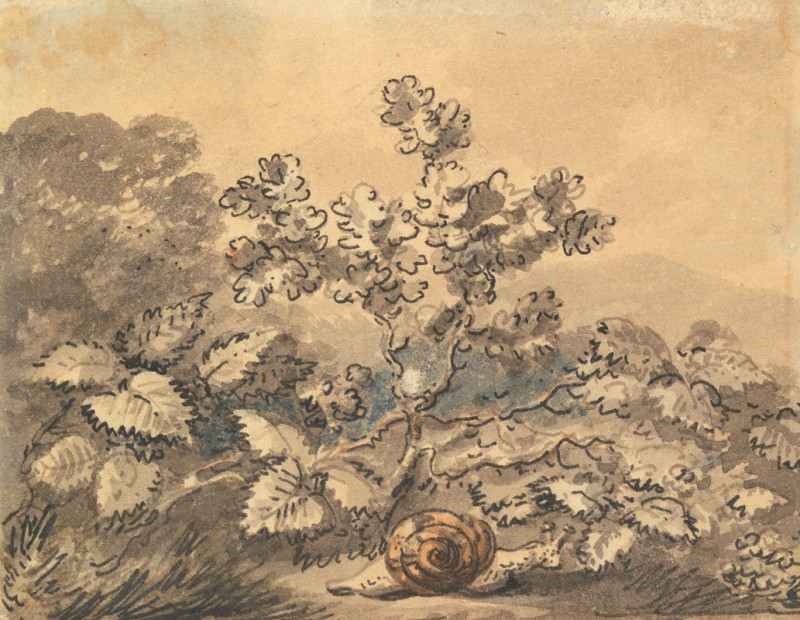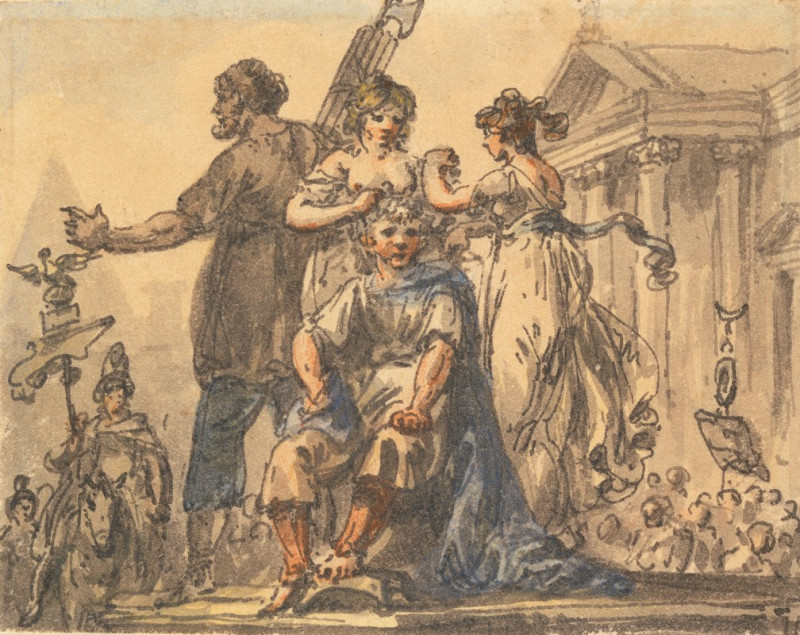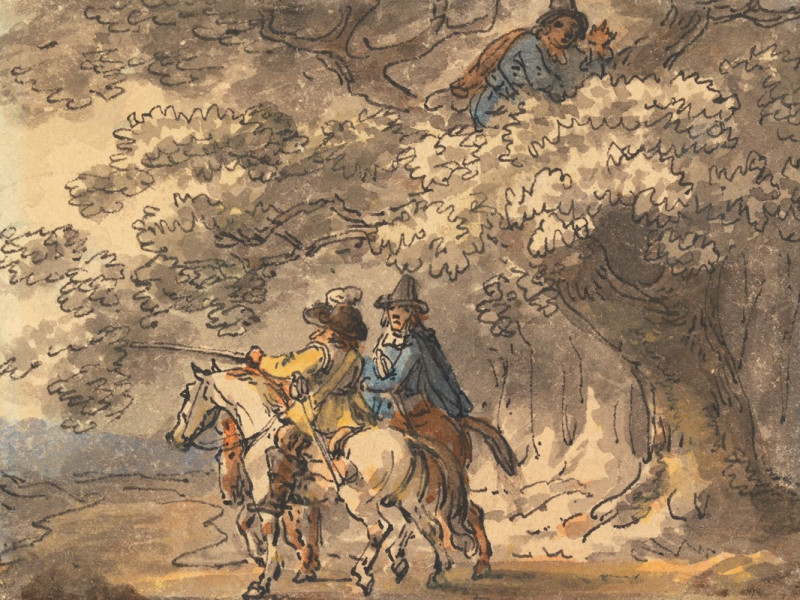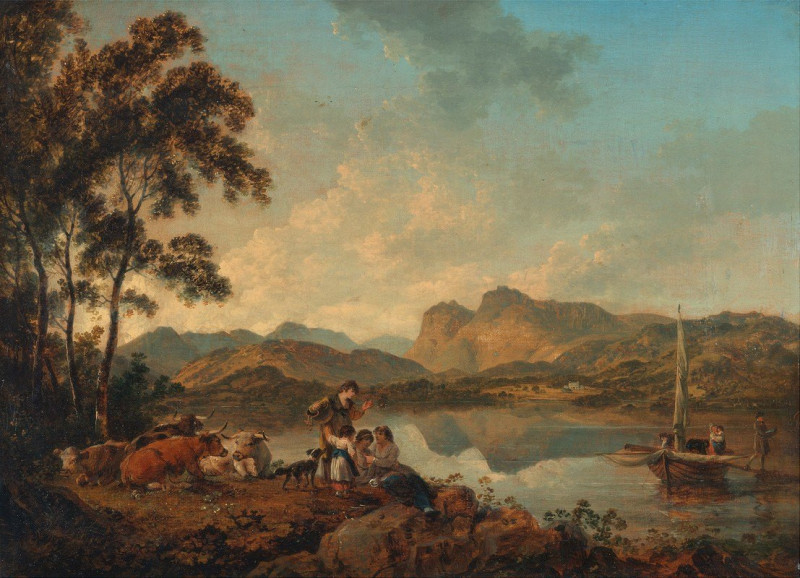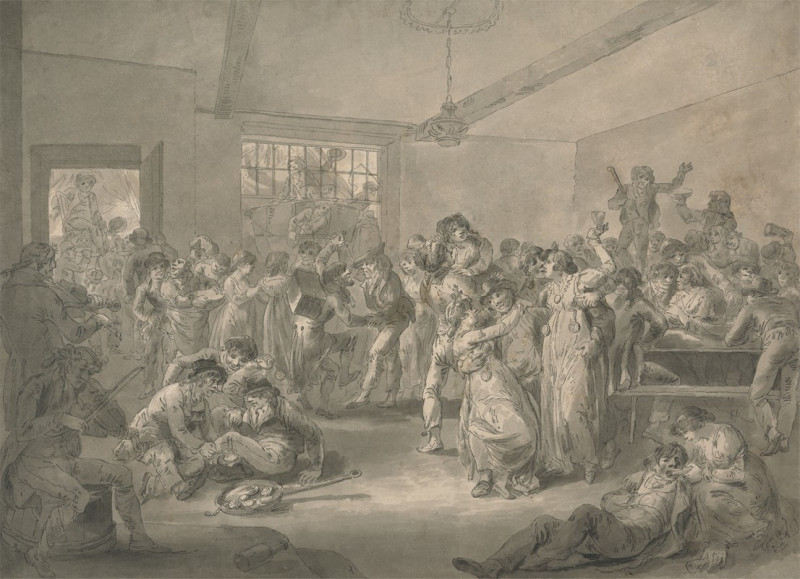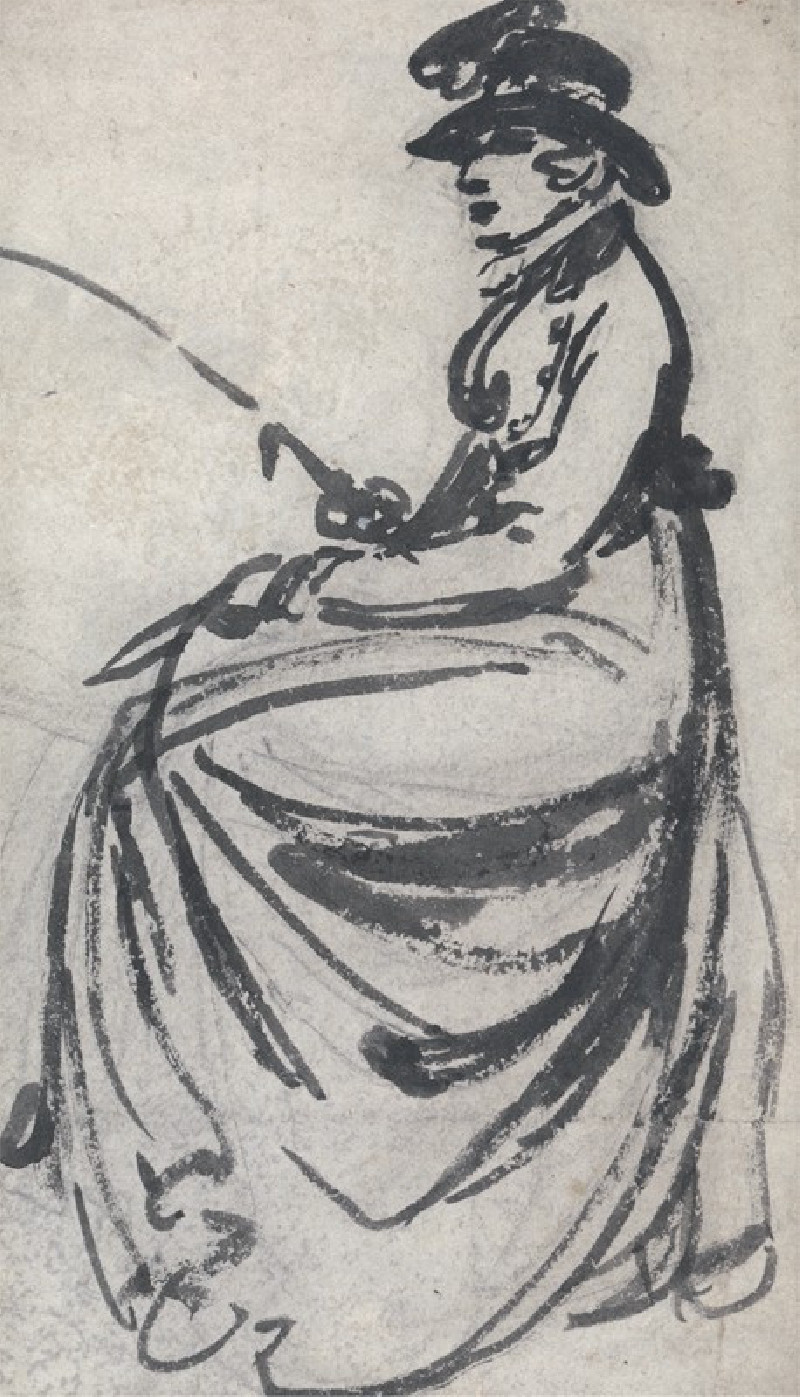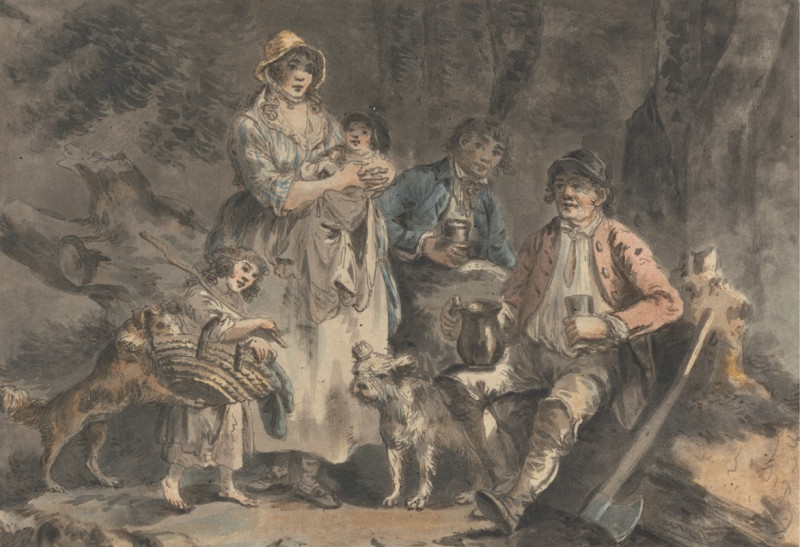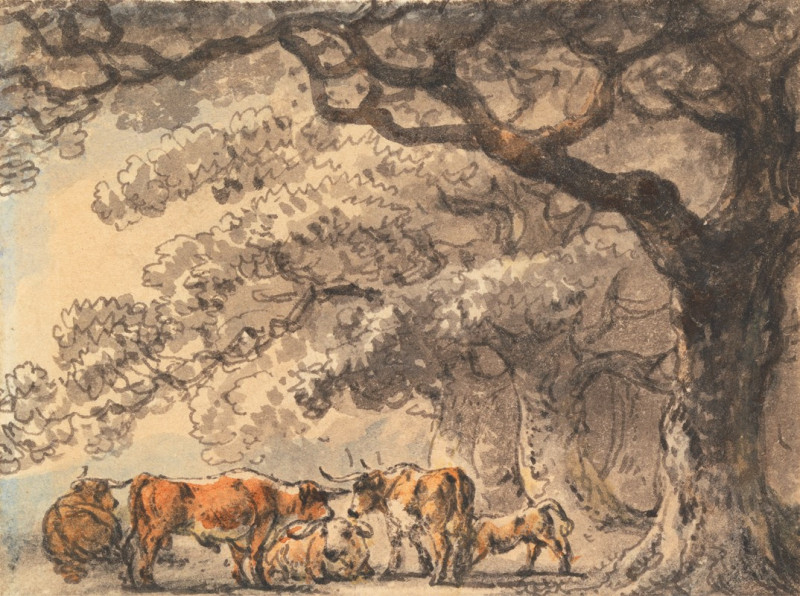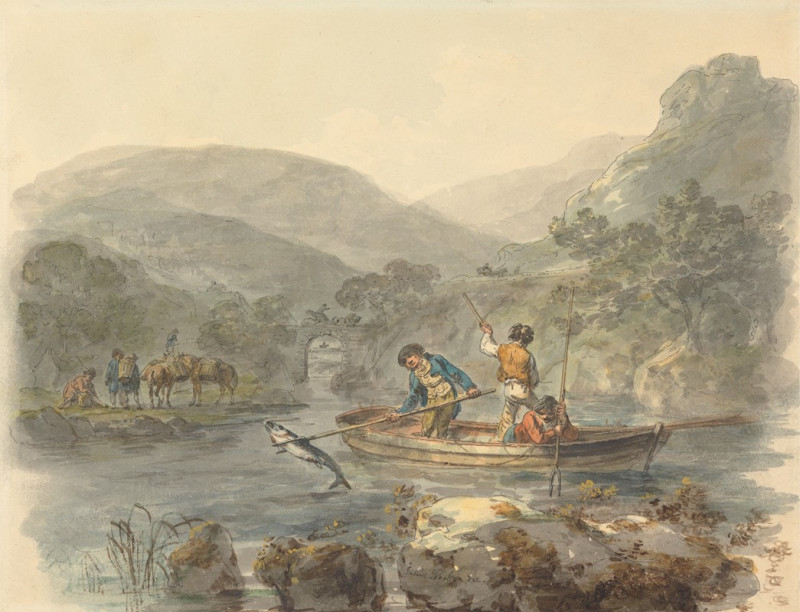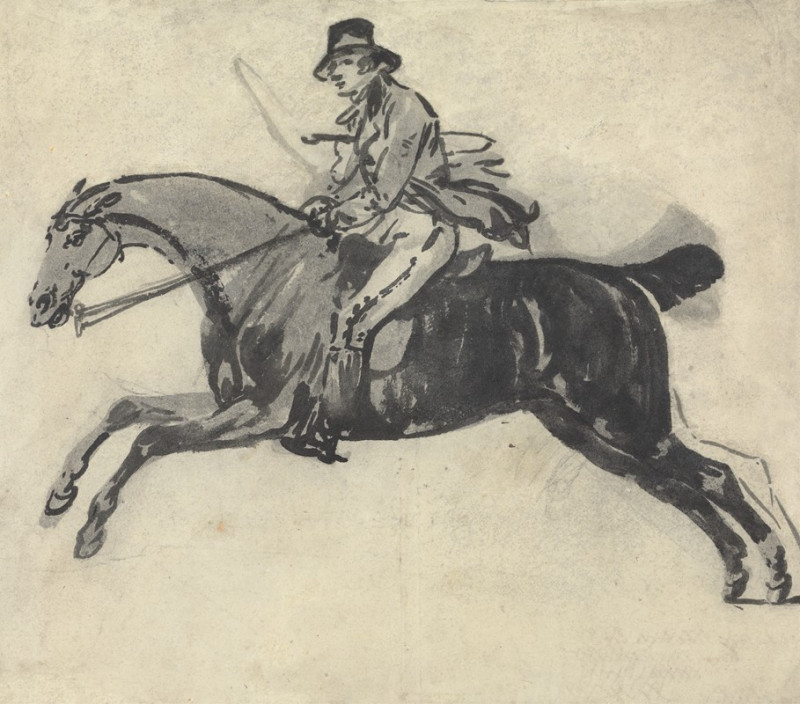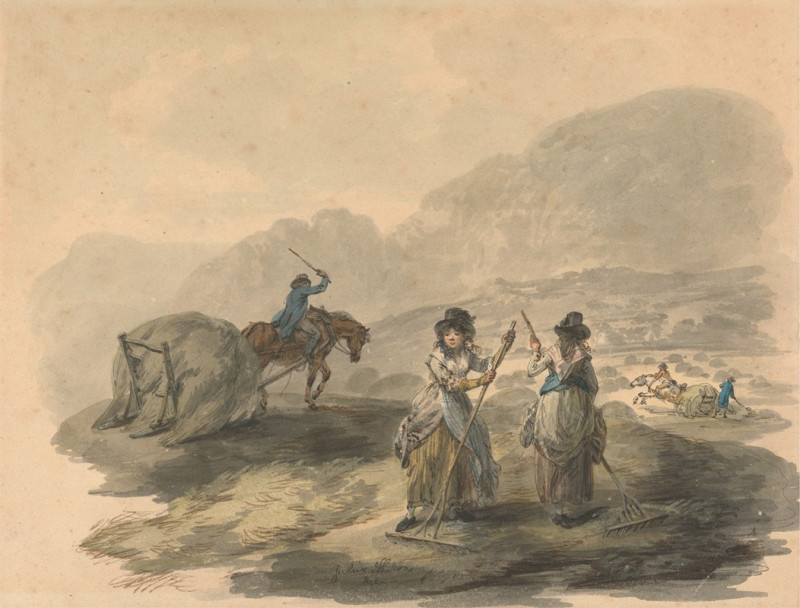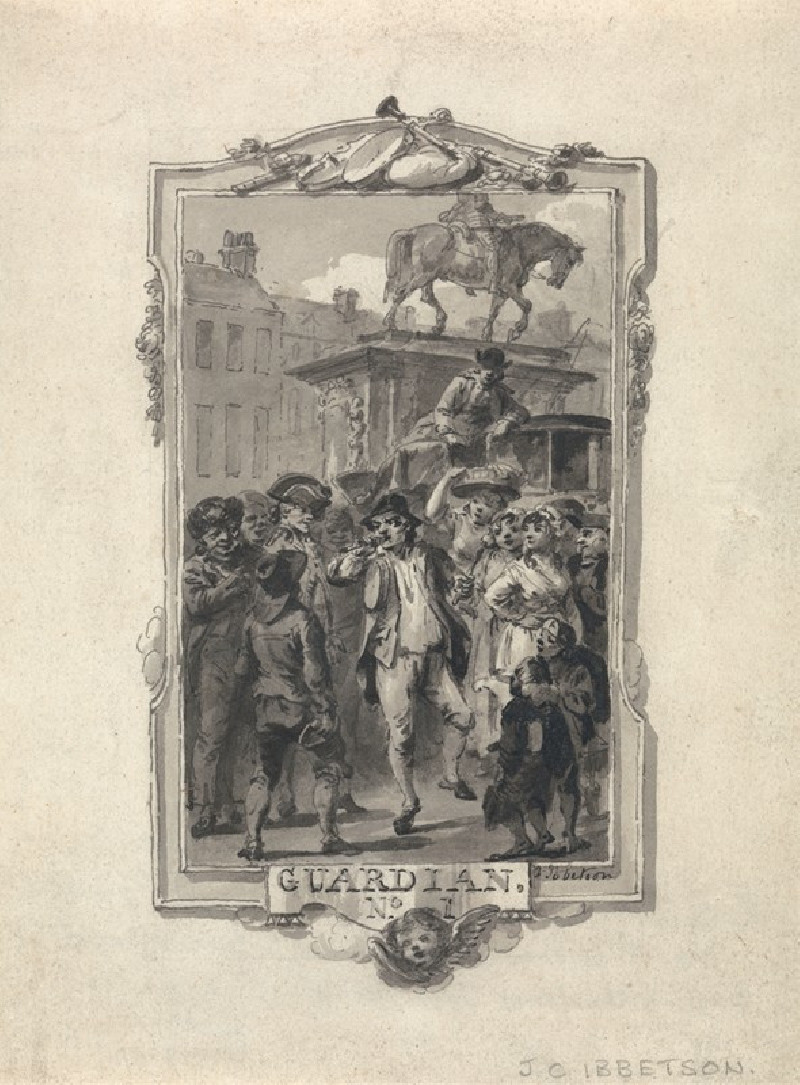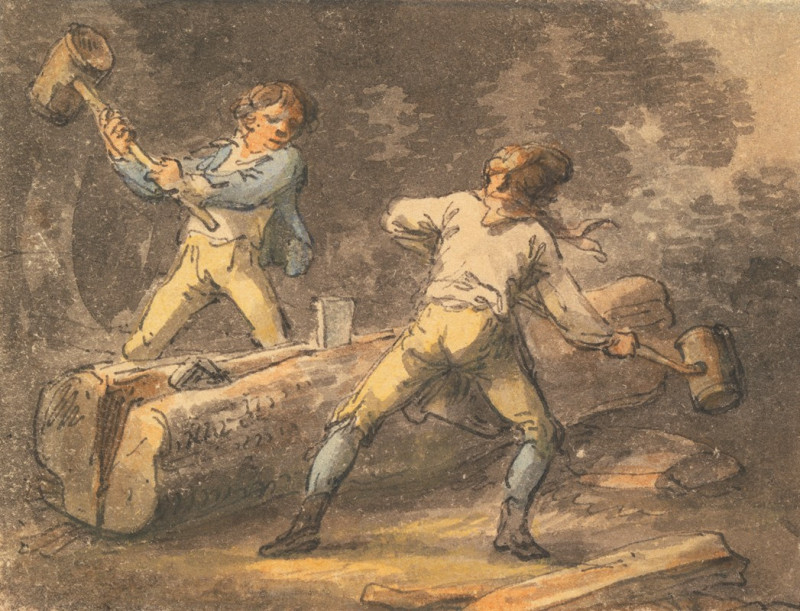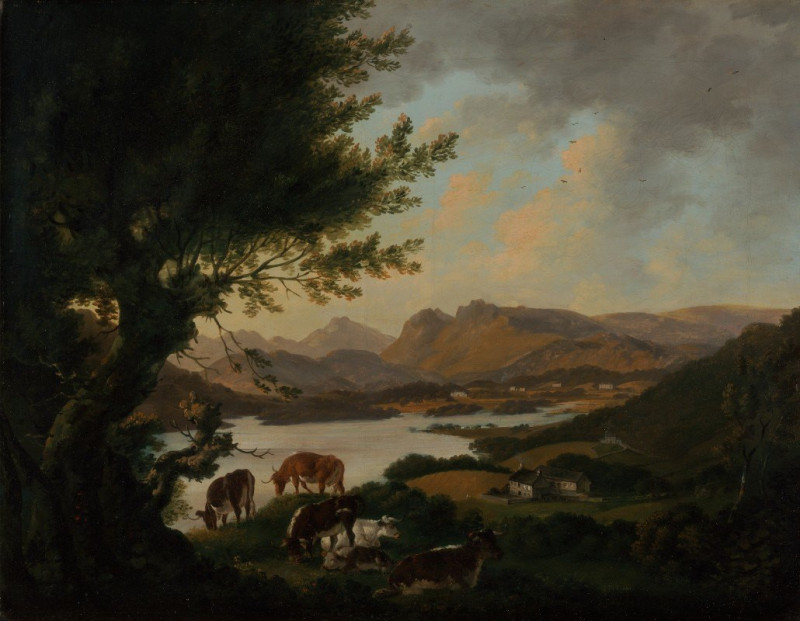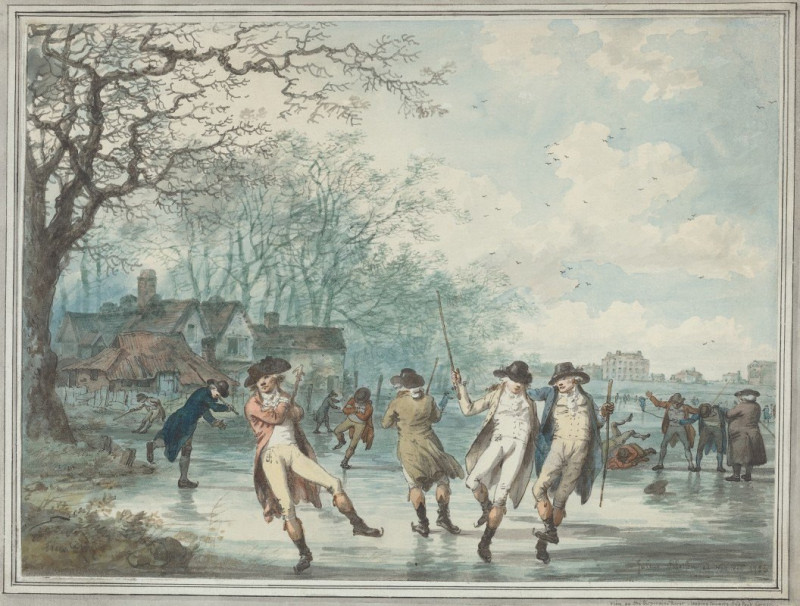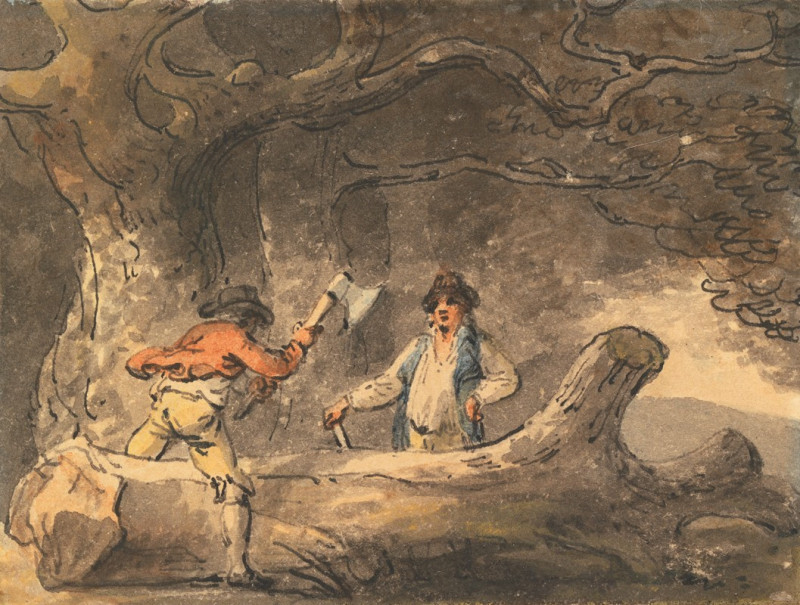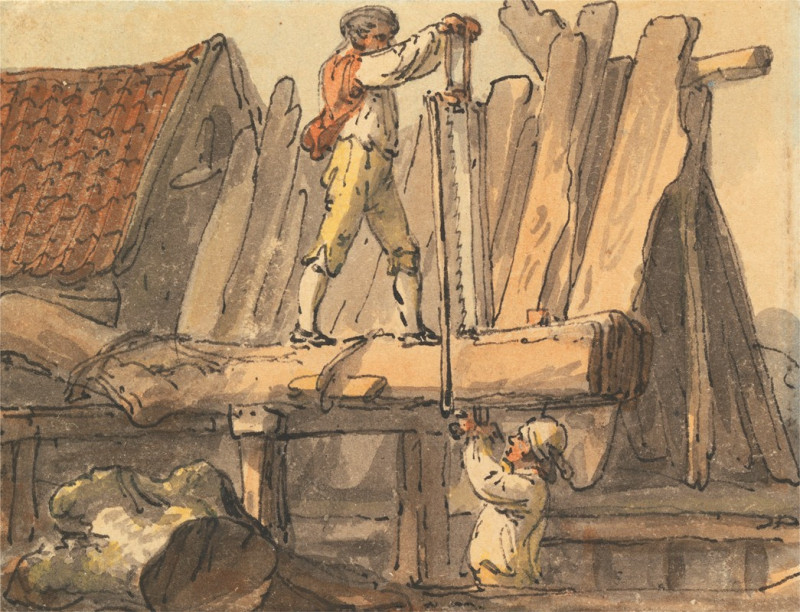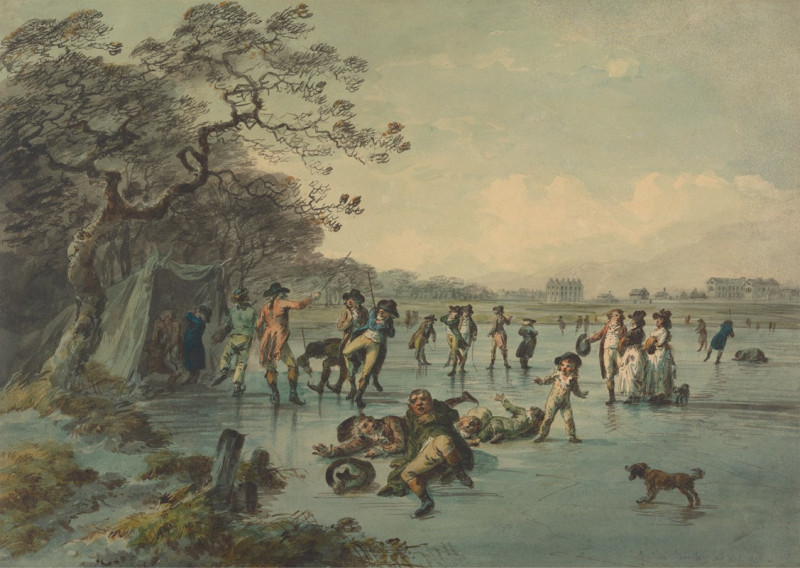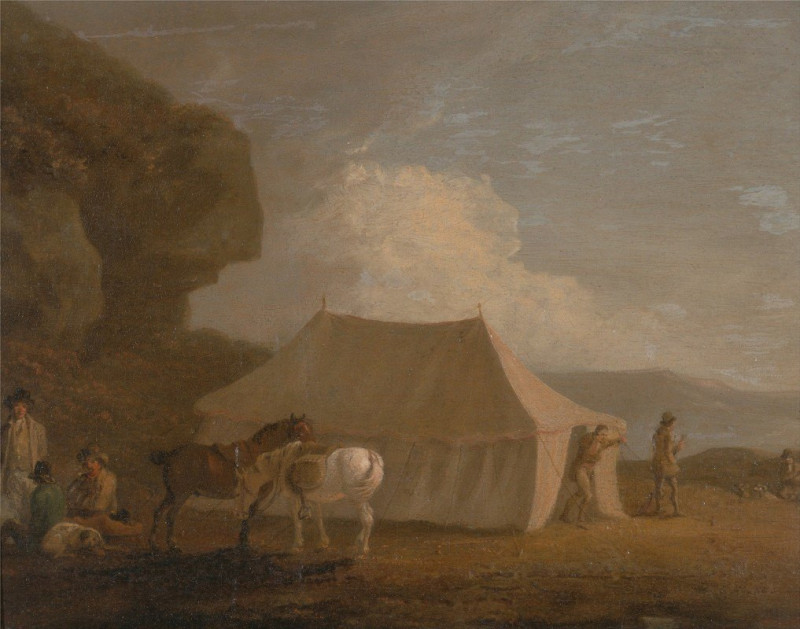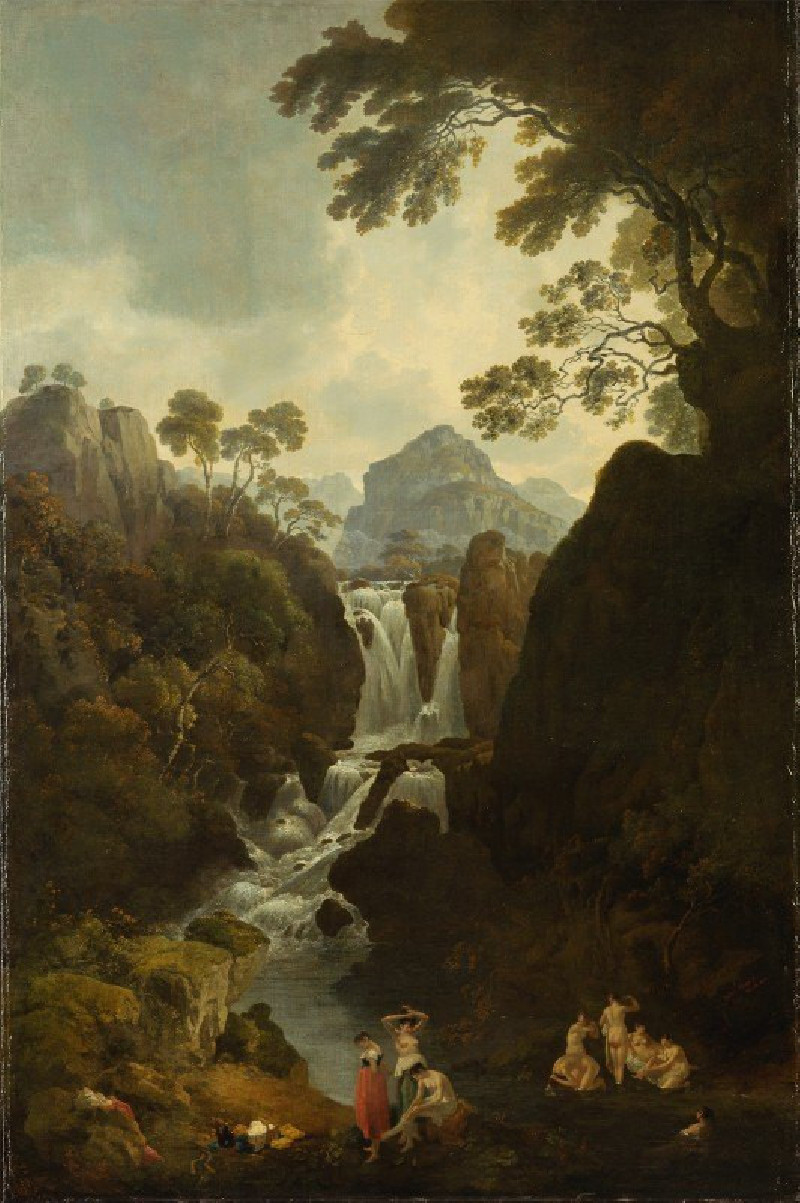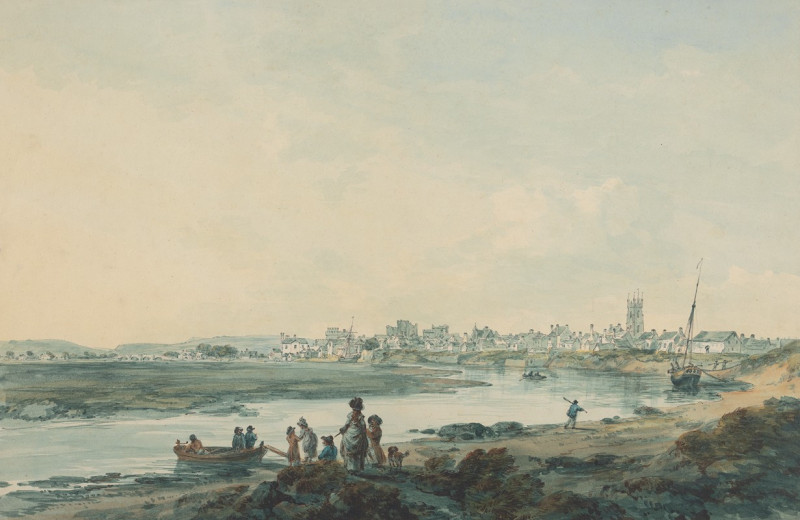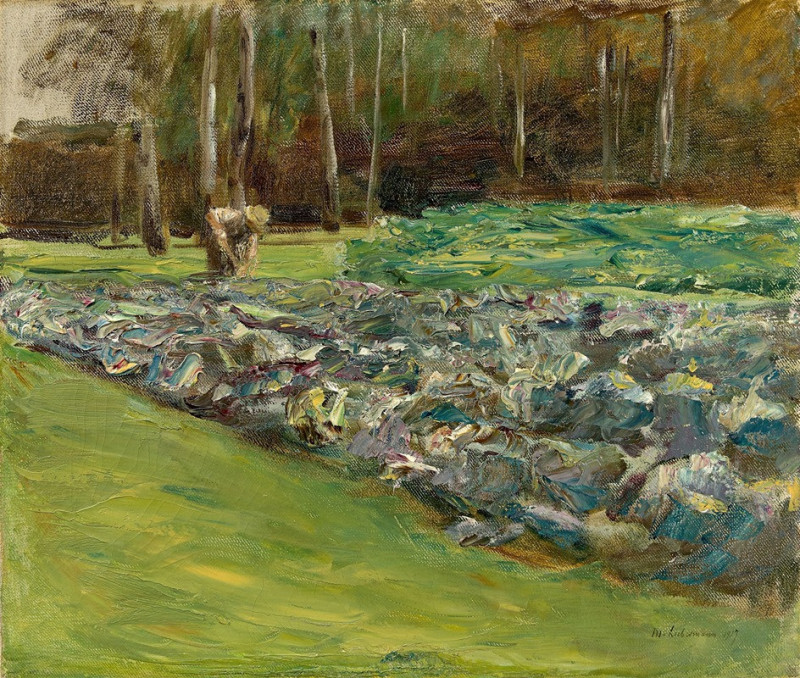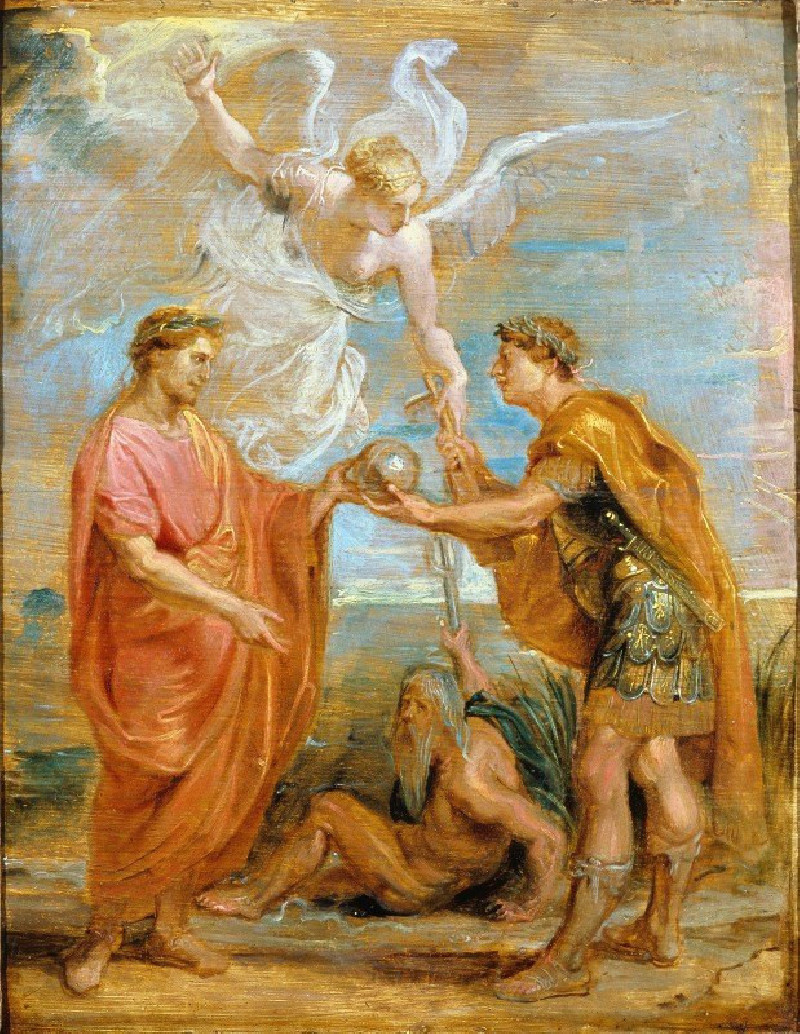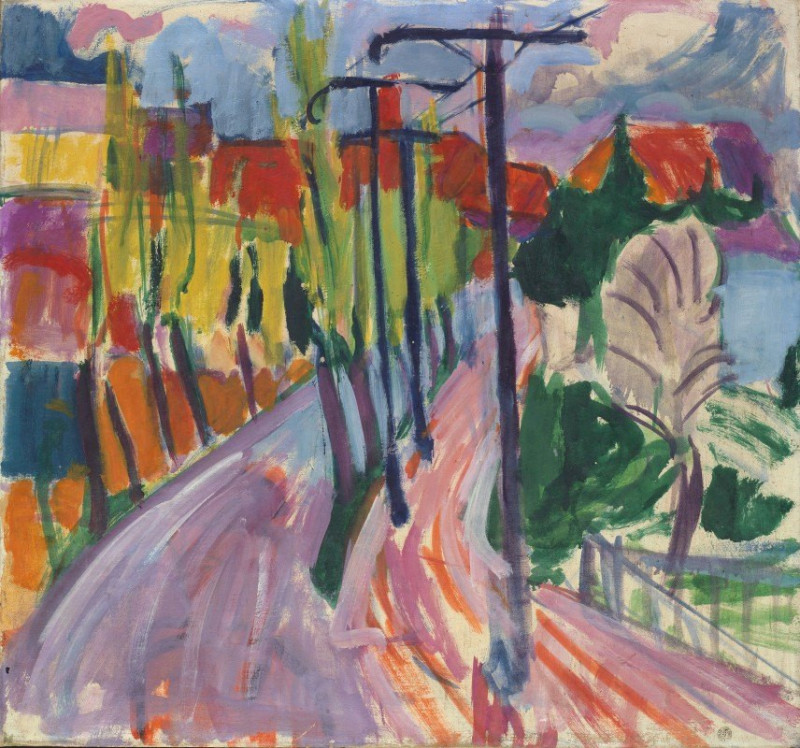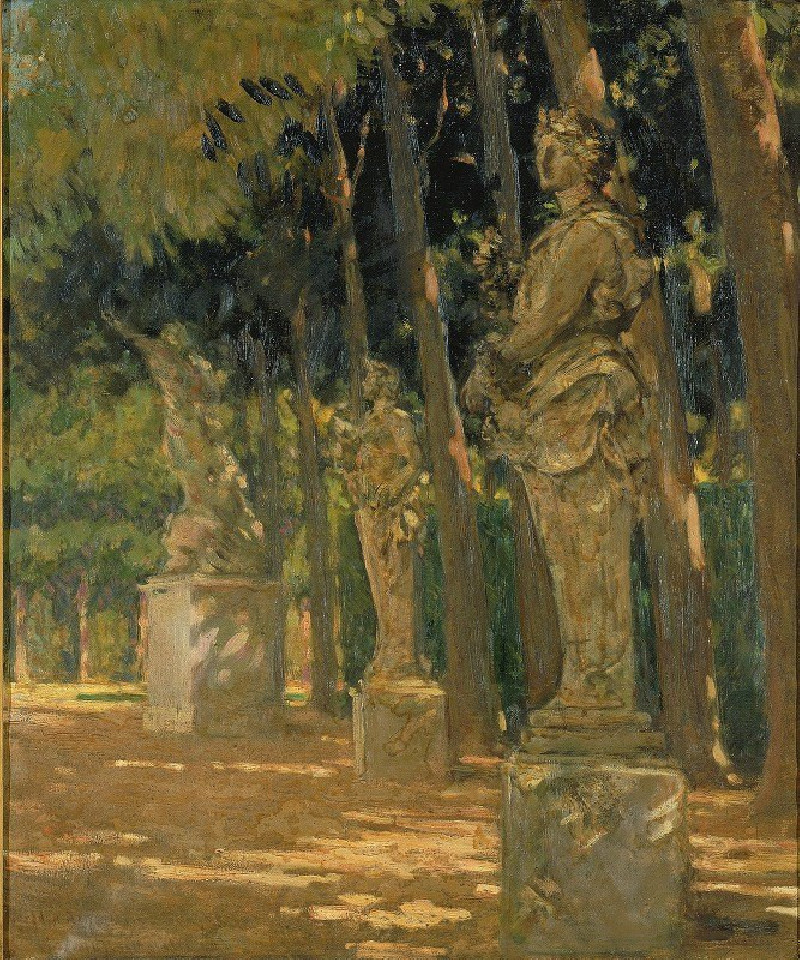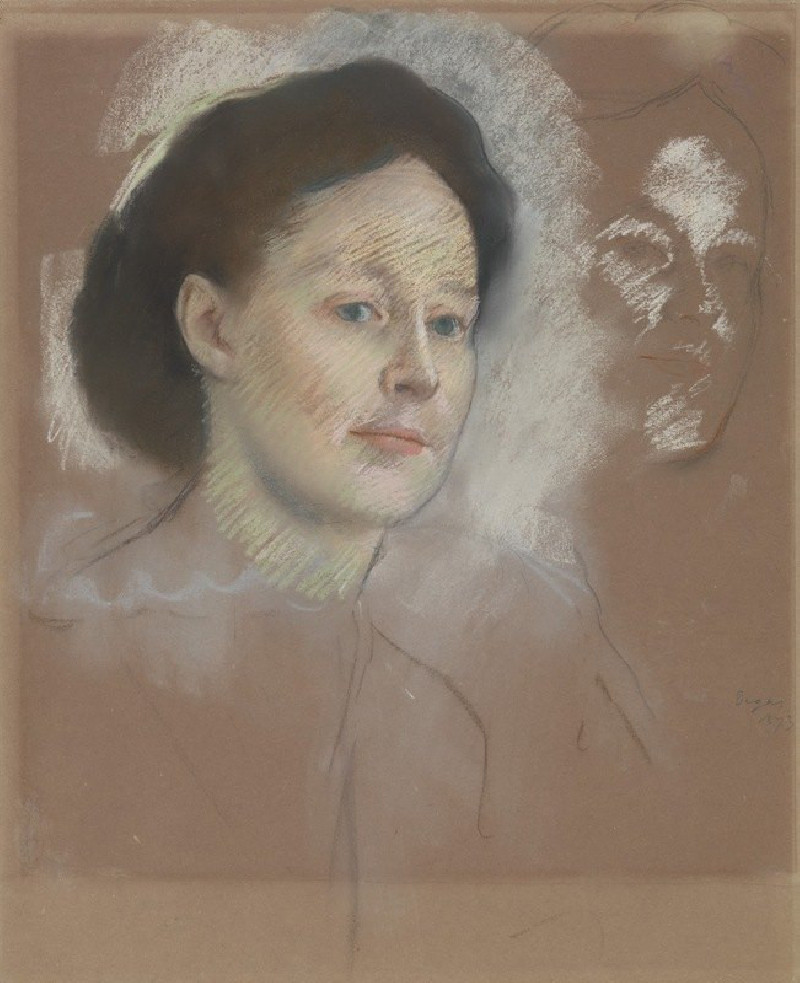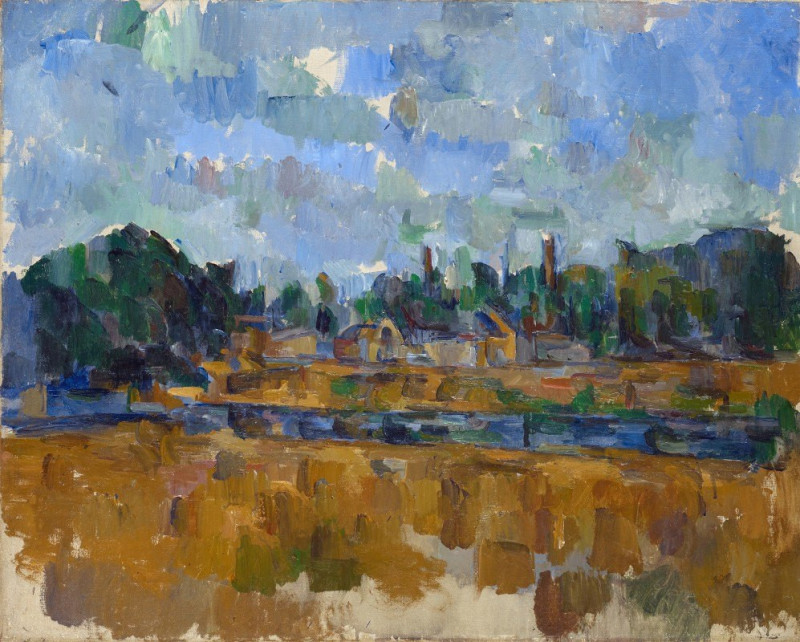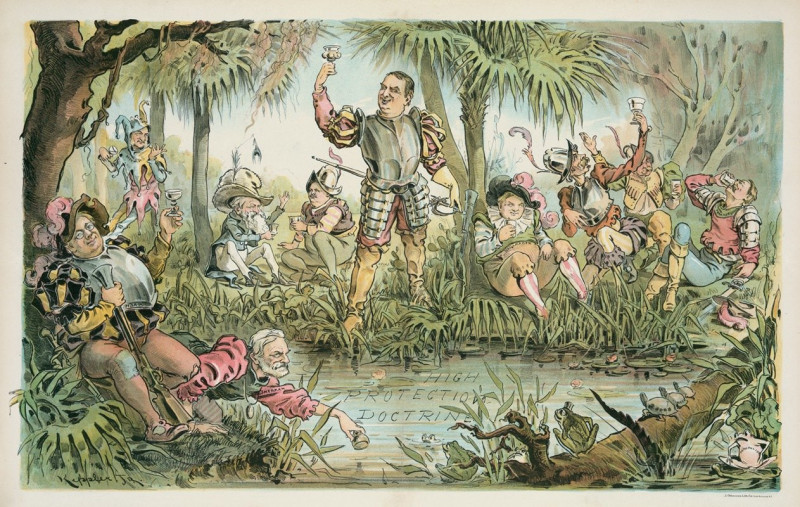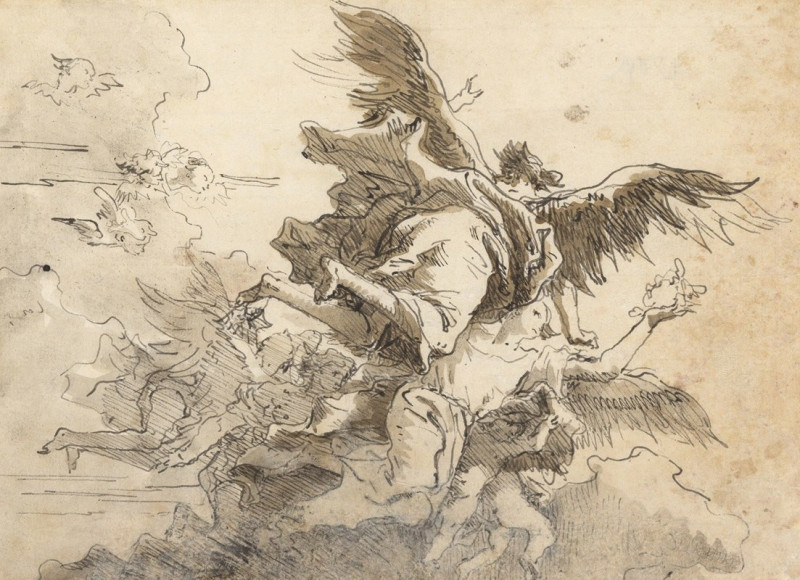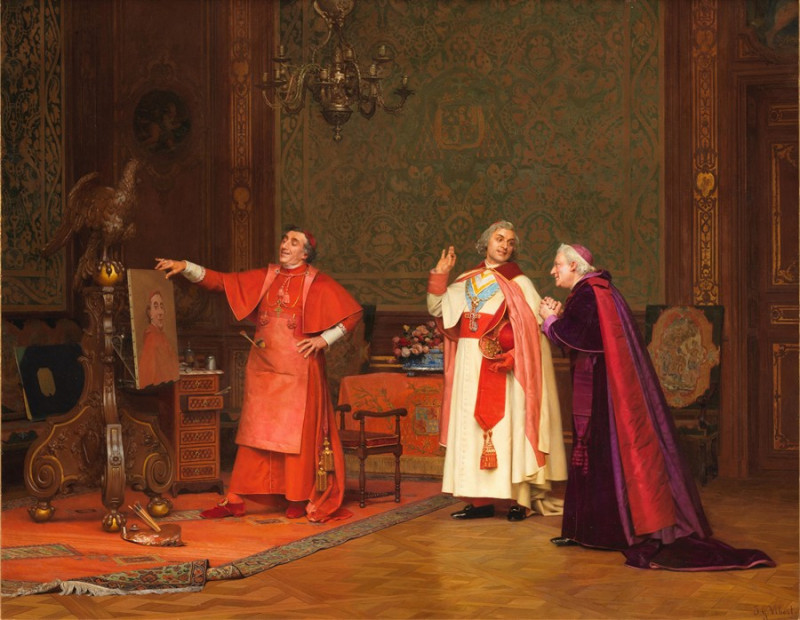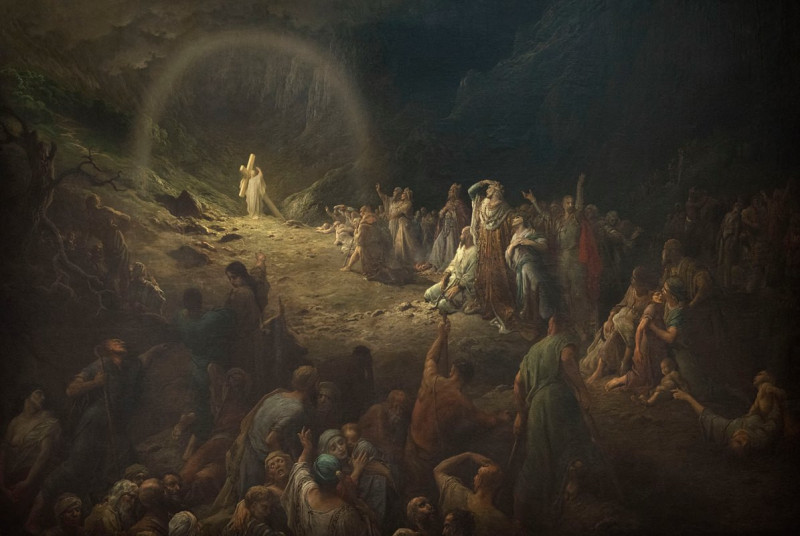Washing with Ashes
Technique: Giclée quality print
Recommended by our customers
More about this artwork
Julius Caesar Ibbetson’s “Washing with Ashes” captures a quaint, bucolic scene of domestic activity, rich with the minute, tender details for which Ibbetson is renowned. Illustrated with gentle watercolors, this painting depicts three women engaged in the task of laundering clothes, a common scene in the late 18th-century rural England.The setting is the exterior of a rustic cottage. One woman busily scrubs clothing in a wooden tub, her sleeves rolled up as she leans into her work, embodying a sense of diligent effort. Beside her, another woman, possibly a companion or relative, aids in wringing out the cleaned items. To the left, a third figure, perhaps younger and shown in partial profile, hangs the laundry upon a line—a task that, while mundane, is essential to the cadence of countryside living.Adding life to the scene is a robust dog, dozing by the doorstep, grounding the painting in everyday realism and familial warmth. The artist’s use of soft hues subtly highlights the tranquility of rural life, while the detailed rendering of the figures and their dress conveys a vivid narrative of their daily toils.
Delivery
Returns
Julius Sergius von Klever was a Baltic German landscape painter.
His father was a chemist who taught pharmacology at the Veterinary Institute. He displayed artistic talent at an early age and took lessons from Konstantin von Kügelgen. After completing his primary education, was enrolled at the Imperial Academy of Fine Arts where, at his father's insistence, he studied architecture. After a short time, however, he began to take landscape painting classes; first with Sokrat Vorobiev, then Mikhail Clodt.

